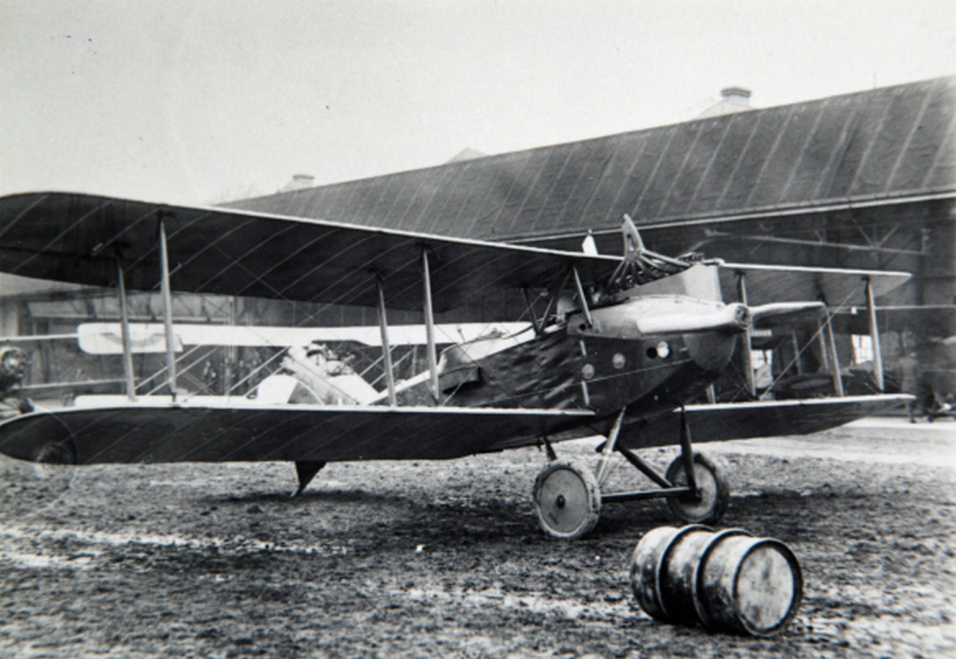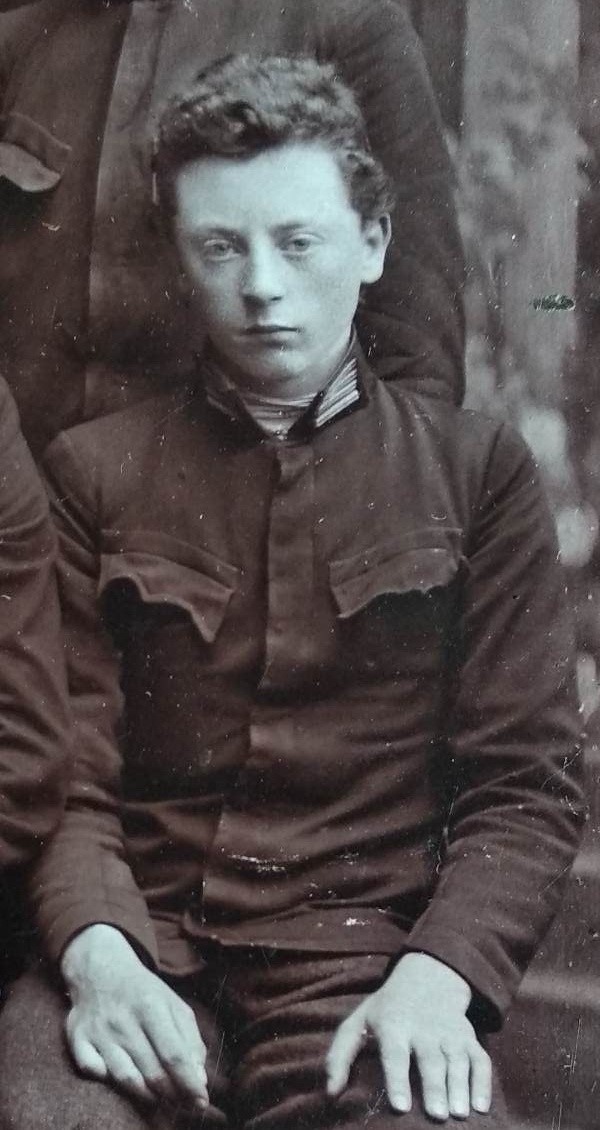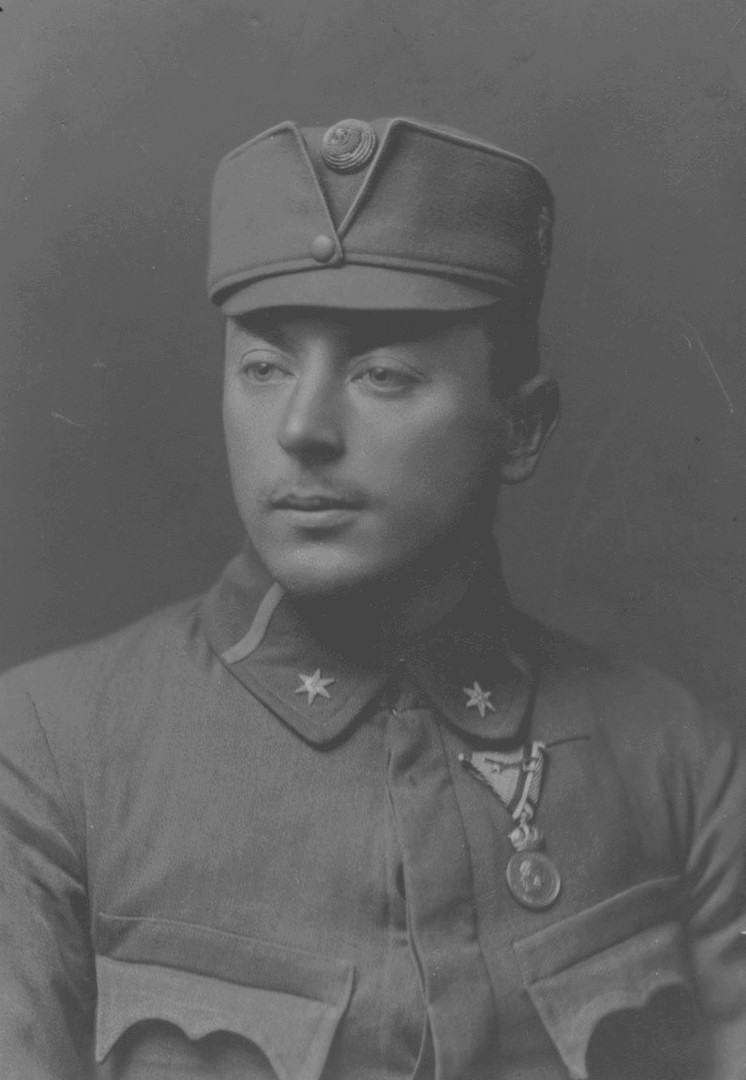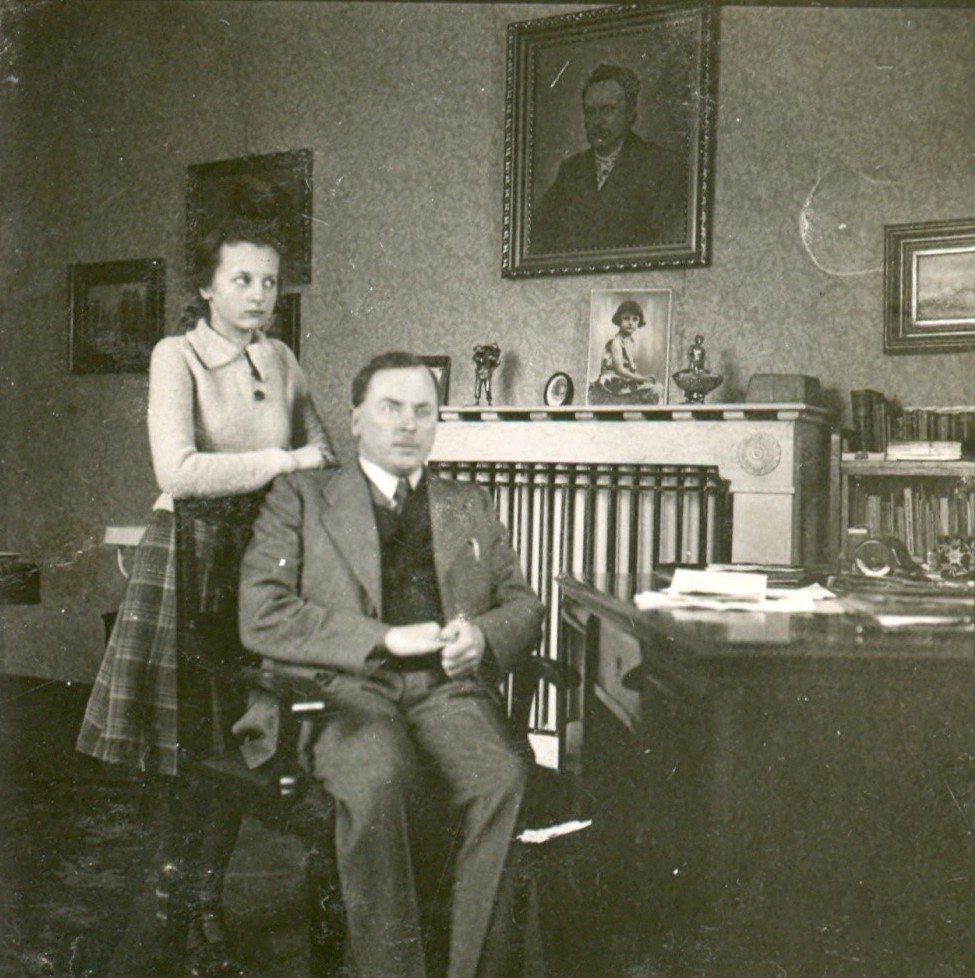An aviation episode from a dramatic life
135 years since the birth of Petro Franko

He was associated with aviation for just over three years. However, both in the public consciousness and even in popular science literature, it is the “flying” period of Petro Franko's biography that has attracted the most attention.
He was born on June 28, 1890, into the family of Ivan Franko, a classic of Ukrainian literature from Galicia, and Olga Khoruzhynska from Kyiv. Petrus was the youngest of three sons, and later the couple had a daughter. The boy grew up to be very active and inquisitive. Despite his restlessness, he enjoyed studying and was already able to read at the age of 4. Petro easily mastered the difficult curriculum of the Lviv Imperial and Royal Academic Gymnasium, which he graduated from in 1910.
He loved chemistry and literature, but for a time, his greatest passion was sports. Thanks to regular training, the young Franko became a true athlete. He also joined the Ukrainian movement in Austria-Hungary. In particular, he was one of the founders of the national scout organization “Plast.” On the eve of World War I, Petro became a member of the Sich Riflemen military society. It is not surprising that with the outbreak of war, he and his comrades volunteered for the Legion of Ukrainian Sich Riflemen.
As a scout, Franko took part in battles against the Russian army in Bukovina, Stanislav, Ternopil, and Lviv regions. He commanded a platoon. At the beginning of 1916, Petro's military fate changed dramatically — he was sent to study at a flight school in Rijelovac near Sarajevo in Bosnia. In modern publications, Franko is often referred to as a military pilot. However, he received the profession of an air observer, which is closer to that of a navigator. His main duty was to conduct aerial reconnaissance using a camera when necessary. In addition, the pilot-observer had to master navigation, fire a machine gun in combat with an air enemy, and, if necessary, drop light bombs manually to attack ground targets.
In the fall of 1918, as a result of the collapse of the Austro-Hungarian Empire, several new states were formed, including the West Ukrainian People's Republic (ZUNR). The State Secretariat for Military Affairs (DSVS) was responsible for building up its armed forces. On December 1, 1918, an order was issued by this department to create an Aviation Department. Lieutenant Petro Franko became its head and aviation advisor to the SSM.
The creation of the combat aviation of the newly formed state had to be carried out in the conditions of war with Poland. The primary tasks were to select personnel and assemble equipment. Franko wrote in his memoirs: “I constantly drove along poor roads to Stanislaviv, Stryi, and Ternopil, gathering people and materials...” (the language of the quoted sources is preserved here and below).
The main airbase was set up at the former Austro-Hungarian airfield near the village of Krasne, east of Lviv. The formation of the flying squadron (air force) began with military personnel who had served in the imperial army. Aircraft and components were collected throughout Galicia. Out of the 2-4 machines brought to Krasne, they managed to assemble one that was more or less suitable for flight. There was a critical shortage of reliable engines. To solve the problem with spare parts, aviators sometimes resorted to improvisation. For example, in the absence of rubber tires, they stuffed the aircraft wheels with straw. Not surprisingly, such techniques often failed. Franko recalled: "The first test flight on a Brandenburg-type aircraft was piloted by Senior Corporal Kavuta, and Lieutenant Slezak flew as an observer... The plane did not fly far... It made a forced landing in a nearby field, landed on soft plowed soil, and tipped over slightly. We rushed to help by car. There was no accident. Lieutenant Slezak reassured us, cheerfully climbing out from under the plane. He only slightly bumped his nose."
In December, Krasne received an important reinforcement: by decision of Hetman Pavlo Skoropadskyi, an aviation unit consisting of several aircraft and at least six experienced pilots, including Colonel Dzhambulat Kanukov, was transferred from “greater” Ukraine. This made it possible to form a fully combat-ready combined flying squadron. Kanukov was appointed its commander.
Judging by Frank's memoirs, this decision by the command came as an unpleasant surprise to him. “It has always been customary in the army for the senior officer to take command,” he wrote. “Colonel Kanukov also intended to do so, but he soon realized that in the circumstances changed by the revolution, this was a difficult task, especially since he did not know the Ukrainian language. By special order of the High Command and the Secretariat, I became commander, and Colonel Kanukov became my deputy.”
However, the documents tell a different story. On December 31, 1918, the chief of staff of the Ukrainian Galician Army, Yevhen Myshkovsky, sent a telegram to Kanukov: "I told you that you are appointed commander of the aircraft squadron. I confirm this again. Lieutenant Franko, as aviation advisor, reports to the Military Secretariat, and in all other respects to you.“ Interestingly, despite the obvious conflict, Franko wrote that between him and Kanukov ”there were never any misunderstandings, nor the slightest hint of a power struggle."
In early 1919, the fiercest battles in Galicia took place near Lviv. The main task of the Ukrainian Air Force remained reconnaissance. The aviators also carried out bombing raids. “Now we were dropping bombs on the High Castle, where the Polish batteries were located, on the railway station, the cadet school, where the Polish radio was located, and the Polish airfield in Yanivsky Bolo,” Franko recalled.
Franko's position allowed him not to participate in combat flights, but the routine of headquarters work did not appeal to his active nature. In his memoirs, he noted that he had completed 40-50 flights in about four months — even by modern standards, this is a lot for such a period of time, and for that period, even more so.
On January 4, he set off on another mission as an observer pilot with his regular pilot Vasyl Kavuta. They conducted reconnaissance and dropped bombs on railway infrastructure, but their Albatross was severely damaged by ground fire. Kavuta managed to skillfully land the damaged aircraft near the village of Dubno, not far from Volodymyr-Volynskyi. However, this turned out to be enemy territory, and the aviators were captured. Franko recalled: “On the second day, I fled from Krakow to the nearby Czech border, and then through Prague, Vienna, Budapest, the Carpathians, Stanislaviv, and back to Krasne. And so, on January 21, I resumed my service.”
It is possible that it was these deadly dangerous “adventures” that prompted Peter to make radical changes in his personal life. Two weeks after returning from captivity, he married Olga-Maria Bilevich, the daughter of a priest, whom he had known for over seven years. Later, the couple had two daughters.
In April 1919, Frank's career as a centurion took a new turn. During a meeting in Stanislav (now Ivano-Frankivsk), held by State Secretary for Military Affairs Dmytro Vitovsky, he learned that, by decision of the government, he was to leave for Belgrade, the capital of the then Kingdom of Serbs, Croats, and Slovenes. On the 14th, Franko left for the Balkans as a representative of the ZUNR government with a mission from the International Red Cross to deal with Ukrainian prisoners of the former Austro-Hungarian army. He never served in the air force again.
Franko lived abroad for over three years. After returning to his homeland, he graduated from Lviv Polytechnic in 1923 and received a degree with honors in chemical engineering. He later taught in schools and universities. From 1931 to 1936, he lived in Soviet Ukraine, where he worked as a senior researcher at the Research Institute of Applied Physics, Chemistry, and Dairy Industry in Kharkiv. He authored several scientific papers.
In September 1939, the Soviet Union and Nazi Germany divided Poland. Western Ukraine became part of the Ukrainian SSR. The Bolsheviks skillfully manipulated Kamenyar's son. Petro Franko became a People's Deputy of the Ukrainian SSR, the first director of the Ivan Franko Memorial Museum, and dean of the Commodity Research Faculty of the Institute of Soviet Trade in Lviv. At the same time, he was considered unreliable and was under secret surveillance by the NKVD.
Despite the repression against the Ukrainian intelligentsia, Franko was left alone. Perhaps his father's name, whom the Bolsheviks had included in the pantheon of revolutionary poets, helped. Everything changed after Germany's attack on the USSR. On June 28, 1941, on his birthday, 51-year-old Petro Franko was arrested and sent under guard by train to Kyiv.
His fate remained unclear for a long time. However, in 2015, a transcript of a top-secret telegram sent from Kyiv to the NKVD on July 6, 1941, was made public, stating: “On the instructions of Comrade Khrushchev, we have arrested Studynsky, Franko, and the Kyiv artist Donets, ‘nationalists,’ and since it is difficult to remove them from Kyiv, we consider it expedient to shoot them. The Central Committee of the Communist Party of Ukraine shares this opinion.” The telegram bears the resolutions “For” of the sinister Lavrentiy Beria, as well as Vyacheslav Molotov and Georgy Malenkov.
In modern Ukraine, the name of Petro Franko is borne by the 7th Tactical Aviation Brigade, which has been participating in the Russian-Ukrainian war since 2014.
Rostislav Maraev

 Fan-page
Fan-page Youtube
Youtube TikTok
TikTok Aviamuseum
Aviamuseum State Aviation Museum
State Aviation Museum


